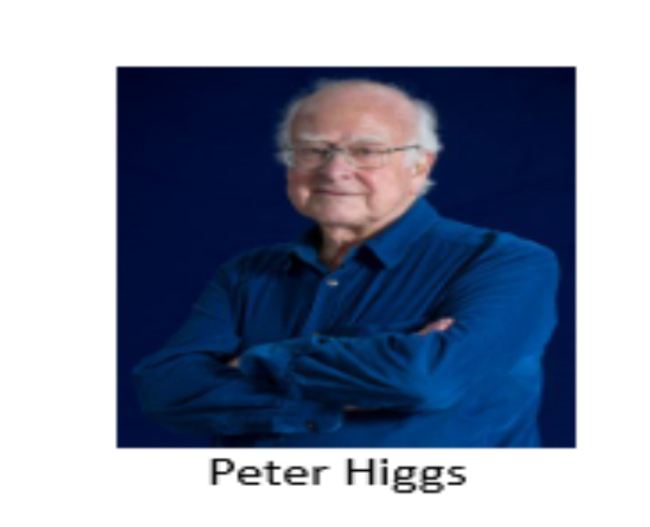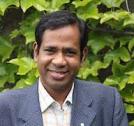
Peter Ware Higgs, popularly known as Peter Higgs and a man responsible to the discovery of GOD’s particle (i.e., Higgs Boson) lived to the age of 95 years from29 May 1929 – 8 April 2024 and left this mortal world towards his meeting with GOD. Peter Higgs was a British theoretical physicist, professor at the University of Edinburgh, and Nobel laureate in Physics for his work on the mass of subatomic particles. In 1964, Higgs was the single author of one of the three milestone papers published in Physical Review Letters (PRL) that proposed that spontaneous symmetry breaking in electroweak theory could explain the origin of mass of elementary particles in general and of the W and Z bosons in particular. This Higgs mechanism predicted the existence of a new particle, the Higgs boson, the detection of which became one of the great goals of physics. In 2012, CERN announced the discovery of the Higgs boson at the Large Hadron Collider. The Higgs mechanism is generally accepted as an important ingredient in the Standard Model of particle physics, without which certain particles would have no mass. For this work, Higgs received the Nobel Prize in Physics which he shared with François Englert in 2013.
Early life
Higgs was born in the Elswick district of Newcastle upon Tyne, England and as a result of childhood asthma, together with the family moving around because of his father’s job and later World War II, Higgs missed some early schooling and was taught at home. When his father relocated to Bedford, Higgs stayed behind in Bristol with his mother, and was largely raised there. He attended Cotham Grammar School in Bristol from 1941 to 1946, where he was inspired by the work of one of the school’s alumni, Paul Dirac, a founder of the field of quantum mechanics. In 1946, at the age of 17, Higgs moved to City of London School, where he specialised in mathematics, then in 1947 to King’s College London, where he graduated with a first-class honours degree in physics in 1950 and achieved a master’s degree in 1952. He was awarded an 1851 Research Fellowship from the Royal Commission for the Exhibition of 1851, and performed his doctoral research in molecular physics under the supervision of Charles Coulson and Christopher Longuet-Higgins. He was awarded a PhD degree in 1954 with a thesis entitled Some problems in the theory of molecular vibrations from the university.
Career growth
After finishing his doctorate, Higgs was appointed a Senior Research Fellow at the University of Edinburgh (1954–56). He then held various posts at Imperial College London, and University College London (where he also became a temporary lecturer in mathematics). He returned to the University of Edinburgh in 1960 to take up the post of Lecturer at the Tait Institute of Mathematical Physics. He was promoted to Reader, became a Fellow of the Royal Society of Edinburgh (FRSE) in 1974 and was promoted to a personal chair of Theoretical Physics in 1980. On his retirement in 1996, he became an emeritus professor. Higgs was elected Fellow of the Royal Society (FRS) in 1983 and Fellow of the Institute of Physics (FInstP) in 1991. He was awarded the Rutherford Medal and Prize in 1984. He received an honorary degree from the University of Bristol in 1997. In 2008, he received an Honorary Fellowship from Swansea University for his work in particle physics. At Edinburgh, Higgs first became interested in mass, developing the idea that particles – massless when the universe began – acquired mass a fraction of a second later as a result of interacting with a theoretical field (which became known as the Higgs field). Higgs postulated that this field permeates space, giving mass to all elementary subatomic particles that interact with it.
Research hypothesis
The Higgs mechanism postulates the existence of the Higgs field which confers mass on quarks and leptons; this causes only a tiny portion of the masses of other subatomic particles, such as protons and neutrons. In these, gluons that bind quarks together confer most of the particle mass. The original basis of Higgs’s work came from the Japanese-born theorist and Nobel Prize laureate Yoichiro Nambu from the University of Chicago. Nambu had proposed a theory known as spontaneous symmetry breaking based on what was known to happen in superconductivity in condensed matter, which incorrectly predicted massless particles (the Goldstone’s theorem). Higgs reportedly developed the fundamentals of his theory after returning to his Edinburgh New Town apartment from a failed weekend camping trip to the Highlands. He stated that there was no “eureka moment” in the development of the theory. He wrote a short paper exploiting a loophole in Goldstone’s theorem (massless Goldstone particles need not occur when local symmetry is spontaneously broken in a relativistic theory[and published it in Physics Letters, in 1964.
Higgs wrote a second paper describing a theoretical model (the Higgs mechanism), but the paper was rejected (the editors of Physics Letters judged it “of no obvious relevance to physics”). Higgs wrote an extra paragraph and sent his paper to Physical Review Letters, another leading physics journal, which published it later in 1964. This paper predicted a new massive spin-zero boson (later named the Higgs boson). Other physicists, Robert Brout and François Englert and Gerald Guralnik, C. R. Hagen and Tom Kibble had reached similar conclusions at about the same time. In the published version Higgs quotes Brout and Englert and the third paper quotes the previous ones. The three papers written on this boson discovery by Higgs, Guralnik, Hagen, Kibble, Brout, and Englert were each recognised as milestone papers by Physical Review Letters 50th anniversary celebration. While each of these famous papers took similar approaches, the contributions and differences between the 1964 PRL symmetry breaking papers are noteworthy. The mechanism had been proposed in 1962 by Philip Anderson although he did not include a crucial relativistic model. On 4 July 2012, CERN announced the ATLAS and Compact Muon Solenoid (CMS) experiments had seen strong indications for the presence of a new particle, which could be the Higgs boson, in the mass region around 126 gigaelectronvolts (GeV). Speaking at the seminar in Geneva, Higgs commented “It’s really an incredible thing that it’s happened in my lifetime.”
Thus, Peter Higgs was awarded the Nobel Prize in 2013 for predicting the boson, which was discovered in July 2012 in experiments at the LHC accelerator at CERN. Francois Englert shared the Nobel Prize with Peter Higgs, but it was Higgs alone who developed the concepts of the Higgs boson and the Higgs mechanism, which form the basis of much of today’s elementary particle theory. Higgs won several awards in addition to the 2013 Nobel prize. In addition to numerous honorary degrees, these included the 1997 Dirac medal and prize from the Institute of Physics, the 2004 Wolf prize in physics, the Sakurai prize of the American Physical Society in 2010, and the Edinburgh medal in 2013. That year he was also appointed Companion of Honour, and two years later he won the Copley medal of the Royal Society, the world’s oldest scientific prize. In the last but not least, we would like to pay tribute to a man who dedicated his entire life to science, earning him the title of a true knight of the field. His humility and capacity for self-reflection serve as an example for today’s generation of scientists who work in a highly competitive environment, where they must fight for citations and grants.

